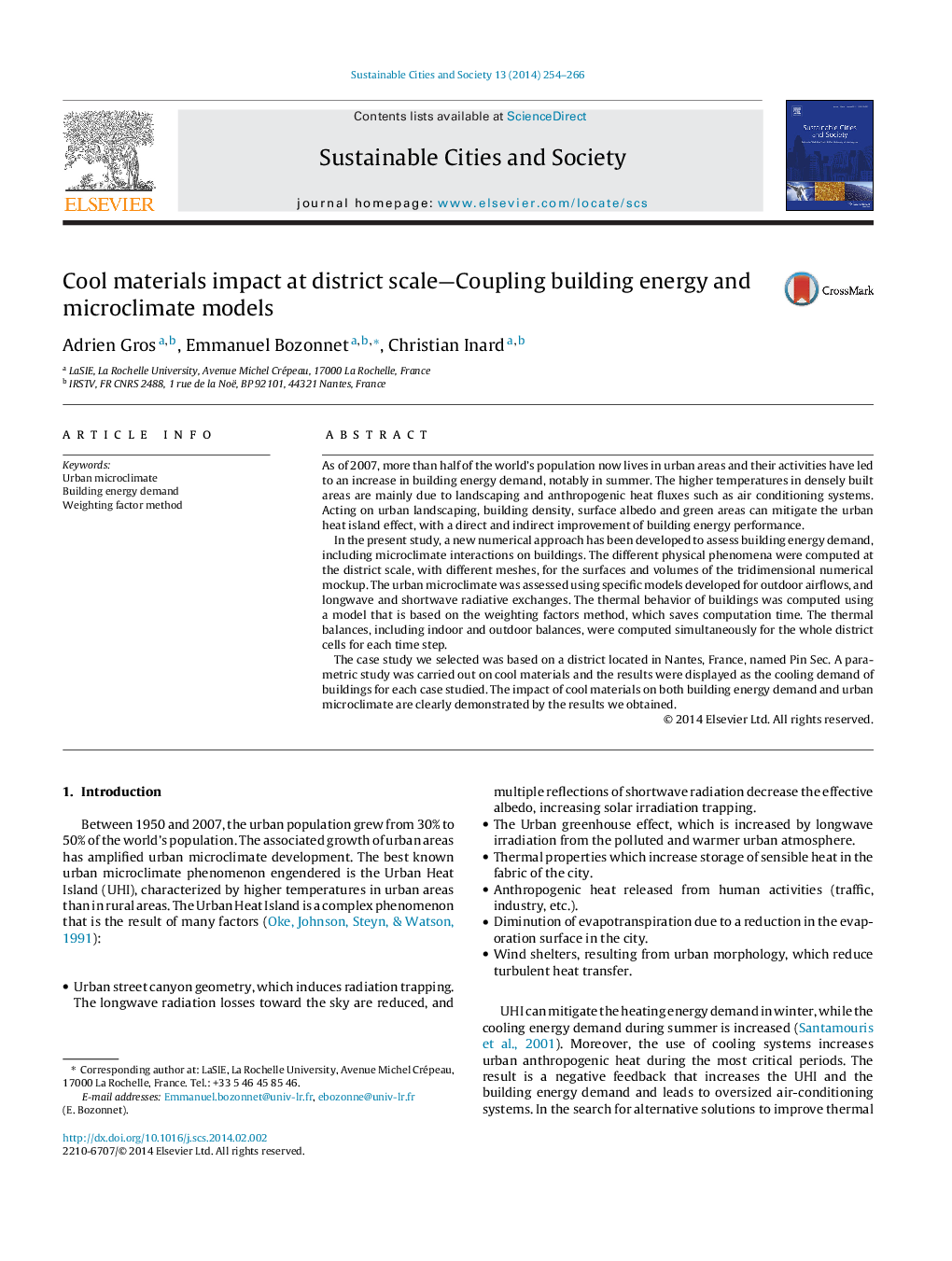| کد مقاله | کد نشریه | سال انتشار | مقاله انگلیسی | نسخه تمام متن |
|---|---|---|---|---|
| 308135 | 513529 | 2014 | 13 صفحه PDF | دانلود رایگان |
• A coupled model of BES and district microclimate is developed.
• A case study shows the effects of cool materials on building energy demand.
• District microclimate mitigation is assessed through the numerical model.
As of 2007, more than half of the world's population now lives in urban areas and their activities have led to an increase in building energy demand, notably in summer. The higher temperatures in densely built areas are mainly due to landscaping and anthropogenic heat fluxes such as air conditioning systems. Acting on urban landscaping, building density, surface albedo and green areas can mitigate the urban heat island effect, with a direct and indirect improvement of building energy performance.In the present study, a new numerical approach has been developed to assess building energy demand, including microclimate interactions on buildings. The different physical phenomena were computed at the district scale, with different meshes, for the surfaces and volumes of the tridimensional numerical mockup. The urban microclimate was assessed using specific models developed for outdoor airflows, and longwave and shortwave radiative exchanges. The thermal behavior of buildings was computed using a model that is based on the weighting factors method, which saves computation time. The thermal balances, including indoor and outdoor balances, were computed simultaneously for the whole district cells for each time step.The case study we selected was based on a district located in Nantes, France, named Pin Sec. A parametric study was carried out on cool materials and the results were displayed as the cooling demand of buildings for each case studied. The impact of cool materials on both building energy demand and urban microclimate are clearly demonstrated by the results we obtained.
Journal: Sustainable Cities and Society - Volume 13, October 2014, Pages 254–266
